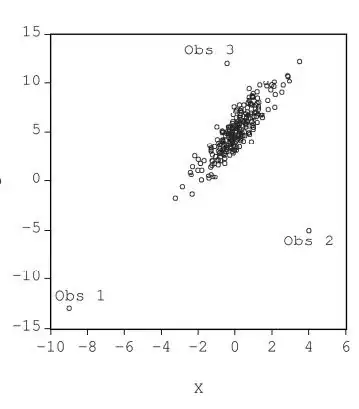a) For which of the following observations (obs1, obs2, obs3) is the variance of the residual the largest? Which observation has the highest leverage? And which one the smallest? Explain why.
b) Which of the three observations has the largest DFBETAS?
c) About which observation would you worry the most?
I thought that the answer to a) would be obs 1, because I think that will have the highest leverage because the distance from the cloud is the greatest (not quite sure whether that is true though). The rest of the questions I had no clue about. Could anyone please help?
